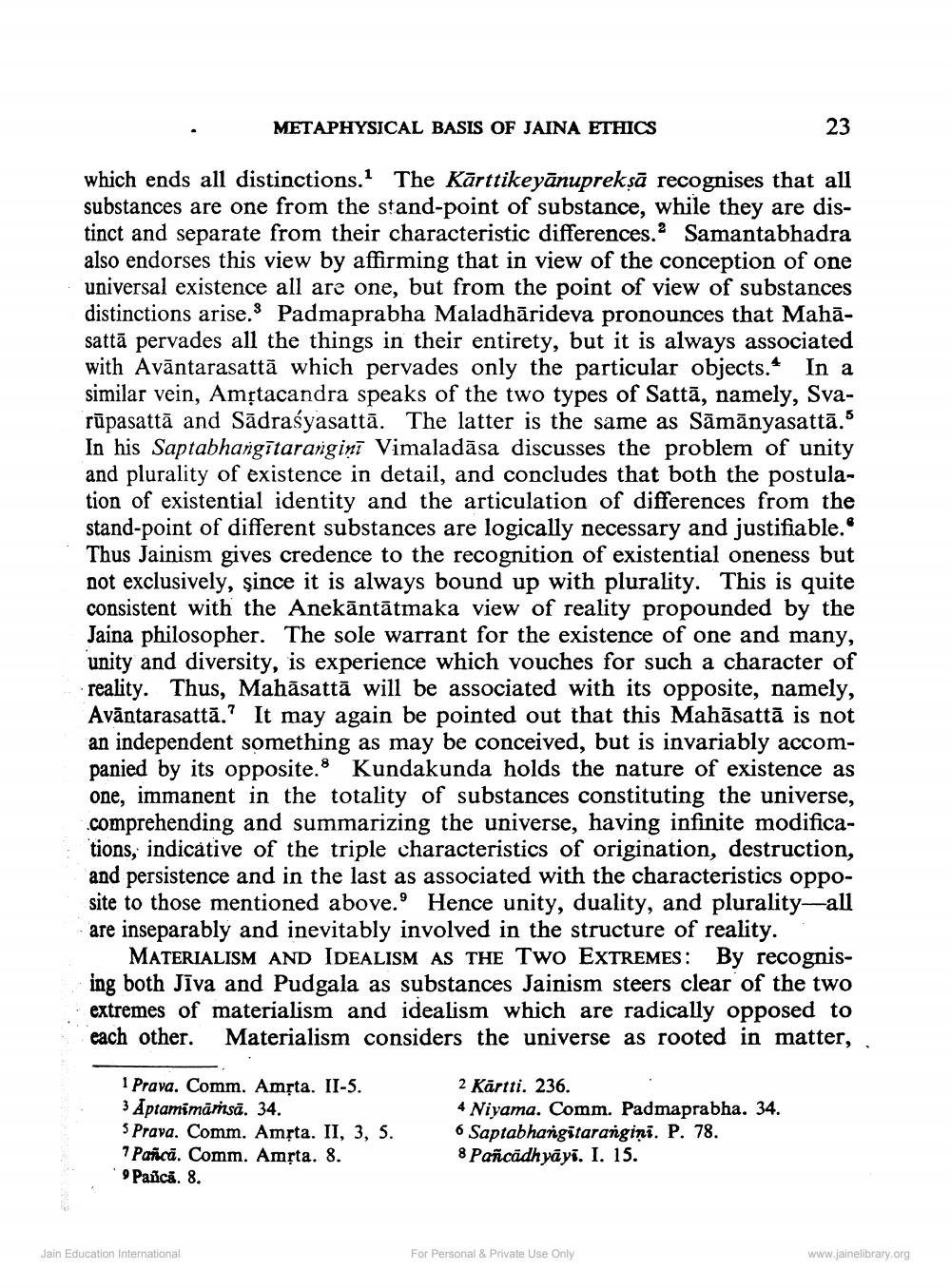________________
METAPHYSICAL BASIS OF JAINA ETHICS
23
which ends all distinctions. The Kārttikeyānupreksā recognises that all substances are one from the stand-point of substance, while they are distinct and separate from their characteristic differences. Samantabhadra also endorses this view by affirming that in view of the conception of one universal existence all are one, but from the point of view of substances distinctions arise. Padmaprabha Maladhārideva pronounces that Mahāsattā pervades all the things in their entirety, but it is always associated with Avāntarasattā which pervades only the particular objects. In a similar vein, Amộtacandra speaks of the two types of Sattā, namely, Svarūpasattā and Sadraśyasattā. The latter is the same as Sāmānyasattā." In his Saptabhangītarangini Vimaladāsa discusses the problem of unity and plurality of existence in detail, and concludes that both the postulation of existential identity and the articulation of differences from the stand-point of different substances are logically necessary and justifiable. Thus Jainism gives credence to the recognition of existential oneness but not exclusively, since it is always bound up with plurality. This is quite consistent with the Anekāntātmaka view of reality propounded by the Jaina philosopher. The sole warrant for the existence of one and many, unity and diversity, is experience which vouches for such a character of reality. Thus, Mahăsattā will be associated with its opposite, namely, Avāntarasattā.? It may again be pointed out that this Mahāsattā is not an independent something as may be conceived, but is invariably accompanied by its opposite. Kundakunda holds the nature of existe one, immanent in the totality of substances constituting the universe, comprehending and summarizing the universe, having infinite modifications, indicative of the triple characteristics of origination, destruction, and persistence and in the last as associated with the characteristics opposite to those mentioned above. Hence unity, duality, and plurality-all are inseparably and inevitably involved in the structure of reality.
MATERIALISM AND IDEALISM AS THE Two EXTREMES: By recognising both Jīva and Pudgala as substances Jainism steers clear of the two extremes of materialism and idealism which are radically opposed to each other. Materialism considers the universe as rooted in matter,
1 Prava. Comm. Ampta. II-5. 3 Aptamina sẽ. 34. 5 Prava. Comm. Ampta. II, 3, 5. 7 Pañica. Comm. Amrta. 8. 9 Panca. 8.
2 Kartti. 236. 4 Niyama. Comm. Padmaprabha. 34. 6 Saptabhangitarangini. P. 78. 8 Pañcâdhyāyi. I. 15.
Jain Education International
For Personal & Private Use Only
www.jainelibrary.org




